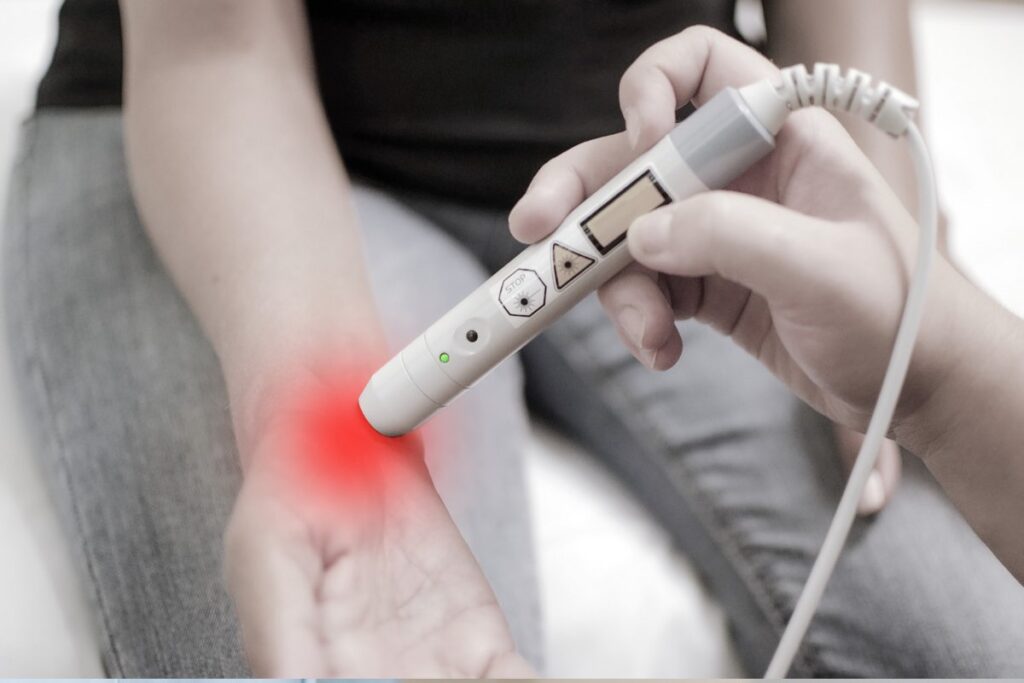All About Carpal Tunnel Syndrome: Symptoms, Causes & Treatment
Carpal tunnel syndrome is one of the most common nerve disorders in the United States, affecting 4 to 10 million Americans every year. In general, this condition is more prolific in the middle-aged and older population and affects women up to three times more often than men.
What is carpal tunnel syndrome?
Carpal tunnel syndrome occurs when the median nerve is compressed in the wrist, causing pain, tingling and numbness in the hand and arm. A sensory and motor nerve, the median nerve begins as a group of nerve roots in the neck and travels down the arm, through the wrist via the carpal tunnel, and into the hand. The median nerve controls the muscles around the base of the thumb and provides feeling to the index, middle, ring finger and thumb.

This area of the wrist is an inch-wide passageway made of tiny carpal bones that protects both the median nerve and the nine flexor tendons that control the fingers and thumb. The top of the tunnel is made up of the transverse carpal ligament, which is a strong band of connective tissue. Because this area is fairly ridged, any narrowing of the tunnel or swelling within the tunnel can put pressure on the median nerve, causing pain, tingling, weakness and numbness in the hand and fingers.
Symptoms
Most people find that the symptoms come on gradually, usually emerging in one or both hands during the night, and often occurring first in the dominant hand.
Common Symptoms
- Pain, burning, tingling or numbness in the thumb, index, middle and ring fingers
- Pain and tingling in the forearm
- Weakness in the hand
- Difficulty with fine motor movements like tying your shoes or buttoning your clothes
- Shock-like sensations that radiate through the hand and fingers
- Fingers feel swollen and useless, despite little or no swelling
Severe Symptoms
- Inability to perform everyday tasks
- Inability to grasp or hold onto objects
- Inability to feel hot or cold by touch
Can carpal tunnel cause shoulder pain?
Yes. The pain can sometimes travel all the way to the shoulder and may cause secondary pain in the neck.
Causes
Carpal tunnel occurs when the tunnel narrows or the tissues around the flexor tendons (the synovium) that are meant to act as lubricant swell and put pressure on the median nerve. Often caused by a combination of factors, most orthopedic hand and wrist specialists will point to a number of medical and environmental factors as the possible cause of carpal tunnel.
Risk Factors
- Trauma or injury to the wrist, such as a sprain, break or fracture
- Heredity/anatomically small carpal tunnels
- Repetitive hand and wrist use for prolonged periods
- Repetitive extreme flexion or extension for prolonged periods
- Diabetes
- Rheumatoid arthritis
- Thyroid imbalance
- Pregnancy
Testing
Your orthopedic hand and wrist specialist will use a combination of questions, exams and tests to determine if your pain is from carpal tunnel syndrome. He or she will use one or more of the following diagnostic techniques.
Review your Medical History and Symptoms
Your doctor will review your medical history for any linked conditions or risk factors, such as previous trauma, diabetes, inflammatory conditions and workplace factors. Symptoms of carpal tunnel typically flare when holding objects, like your phone, a book or a steering wheel, and intensify at night.

Physical Exam
Your orthopedic surgeon will test the muscle strength in your hand and the feeling in your fingers. He or she will also bend the wrist and tap your nerve, as merely touching the median nerve can trigger the pain and tingling sensation that come with carpal tunnel.
Electromyography
An electromyography tests the small electrical charges that are produced in the muscles of your hand and fingers. To test and identify and damage to the muscles controlled by the median nerve, your doctor will insert a thin-needle electrode into various muscles to measure the electrical activity when your muscles contract and rest. This can help diagnose and rule out other hand and wrist conditions.
Nerve Conduction Test
A type of electromyography, a nerve conduction study can also help diagnose or rule out other conditions. Instead of using a thin-needle electrode, your hand and wrist specialist will tape two electrodes to your skin and send a small shock through the median nerve to see if the electrical pulses are slowed in the carpal tunnel.
Non-Surgical Treatment Options

- Splinting and braces for carpal tunnel
- Cold compresses
- Reduction in aggravating activities
- Nonsteroidal anti-inflammatory drugs (NSAIDs)
- Corticosteroids or lidocaine
Surgical Treatment Options
If nonsurgical treatments do not resolve your symptoms or if your condition is too severe for nonsurgical intervention, you may require a carpal tunnel release surgery. There are two different types of carpal tunnel surgery: open release surgery and endoscopic surgery.
Open Release Carpal Tunnel Surgery
This is the traditional procedure to fix carpal tunnel syndrome. In an open release, the orthopedic hand and wrist surgeon will make an incision in the wrist and cut the transverse carpal ligament at the top of the tunnel to relieve the pressure on the median nerve.
Endoscopic Carpal Tunnel Surgery
Endoscopic surgeries typically allow a faster recovery with less post-surgery pain and discomfort. Just as in an open release surgery, the orthopedic surgeon cuts the transverse carpal ligament; however, he or she does so through tiny incisions using less invasive endoscopic techniques.
Surgery Recovery Time
After surgery, the transverse carpal ligament usually grows back together and naturally provides more space for the median nerve and flexor tendons within the carpal tunnel. Thankfully, most people will experience immediate relief from symptoms, though full recovery requires physical therapy and can take months.
If you have any questions about carpal tunnel or your current hand and wrist symptoms, please contact us today.
Leave a Reply